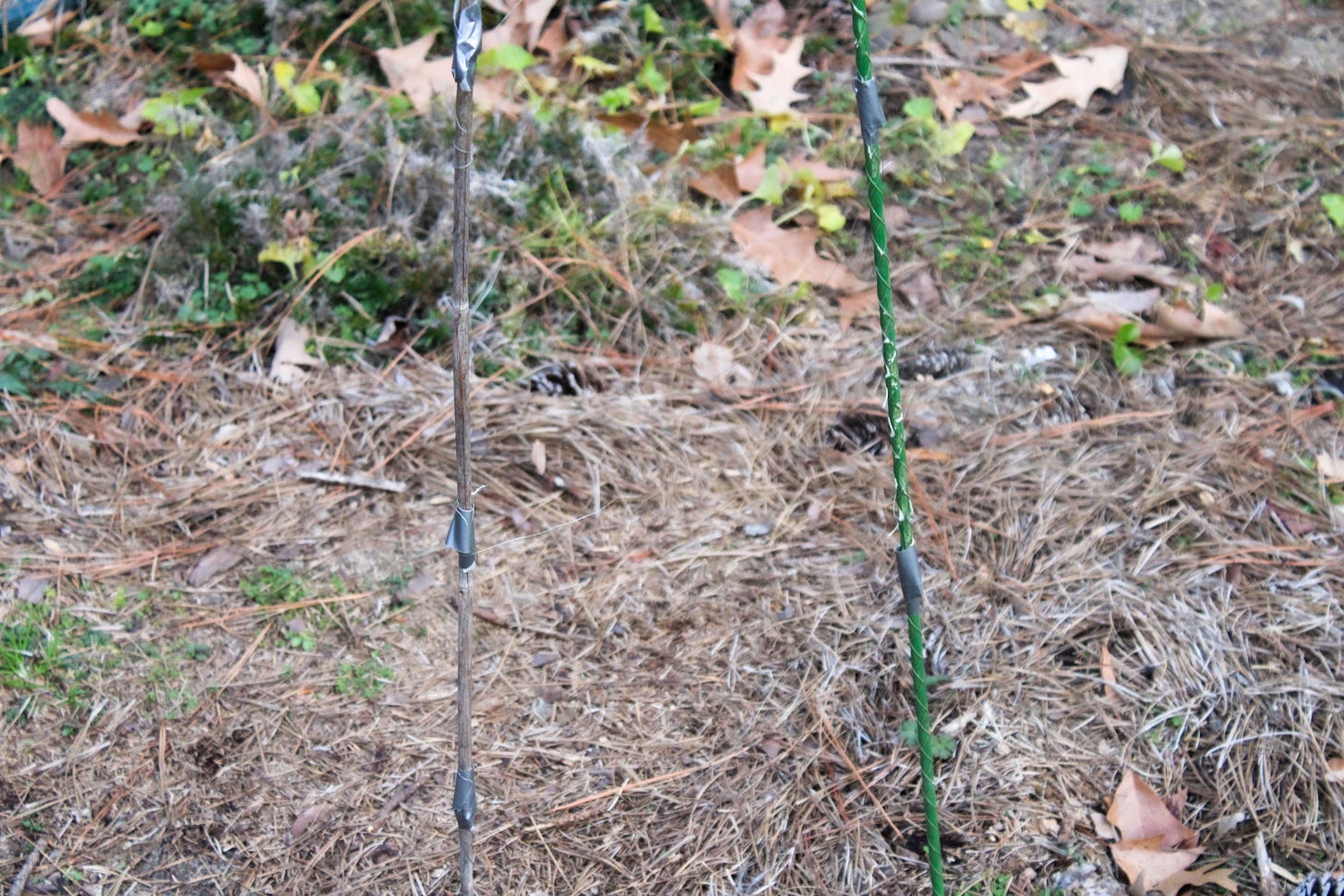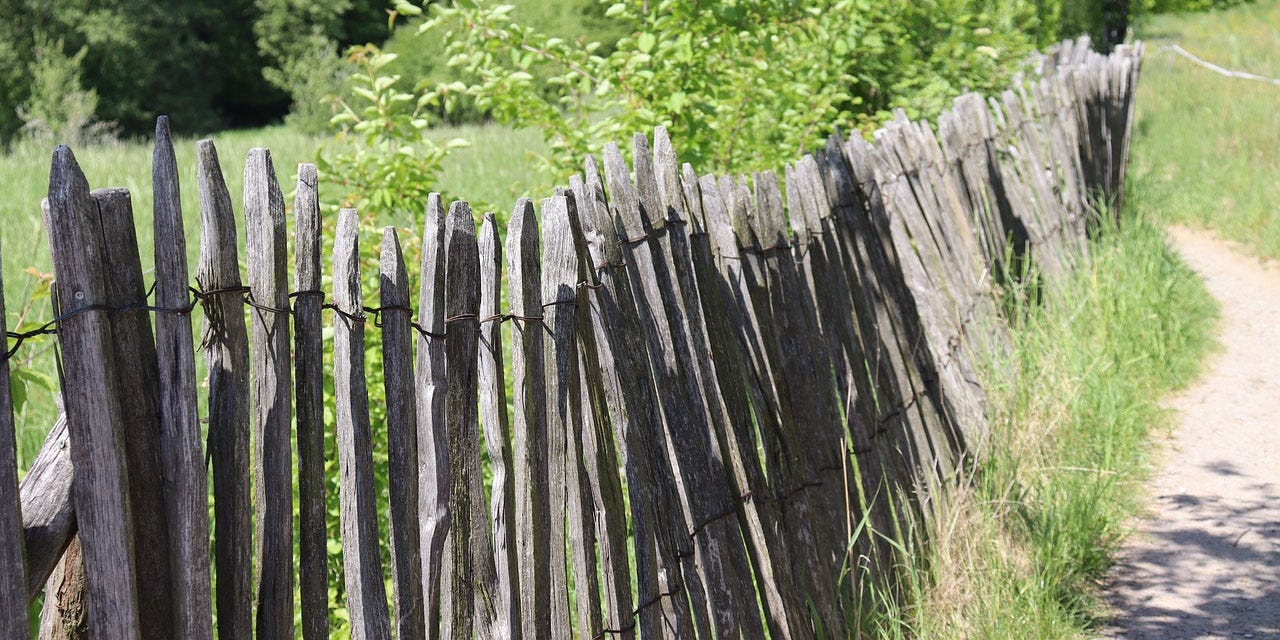Oh Dear, the Deer
Oh dear, the deer…
There must be somebody out there who likes deer. Sadly, deer usually are perceived as a scourge that will enjoy the fruits of your labors - often to the point you can’t tell you labored at all. I cannot tell you how many times I’ve planted blueberry shrubs (love acid soil) for my husband who loves blueberries, only to come out a few days later and wonder where they went. Gone. Not a trace.
Others long for a hasta garden, glorious vegetable garden, or even just a few nice trees and shrubs. Deer prefer native plants, so it can get ugly.
Deer are a menace to all gardens… granny’s, yours, everyone’s. Possibly unnoticed except by a few sharp eyed forest trekkers, they are every bit the menace to our forests as your garden, and easily as destructive as most invasive plants.
In fact, deer are often the reason the invasive plants can take over in the first place!
We’ve met the enemy… and it’s Bambi.
Yes, I’ve read the book. Seen the cute Disney movie, too. Poor, poor, adorable Bambi!
But the book, “Bambi, A Life in the Woods” by Felix Salten, was first published in 1923, 100 years ago. At that time, “Romanticism” was still a driving force in all art. Glorification of nature was at the heart of the movement, and “man vs. nature” was a huge literary theme. Bambi arrived on the scene after roughly 150 years of Romanticism dominated literature and thrilled an audience absolutely ready to worship the deer.
Bambi lovers still abound, but deer are becoming more and more of a focus for naturalists. And homeowners of all stripes.
In study after study, the deer are found to be such a destructive force that other forest destroying elements cannot be determined without fencing out the deer (and wondering how much of what you observe is due to deer in the first place).
“Overall, native deer reduced community diversity, lowering native plant richness and abundance, and benefited certain invasive plants, suggesting composition and ecosystem services in native forests across broad swathes of the eastern USA.” (A regional assessment of white-tailed deer effects on plant invasion, AoB PLANTS, Volume 10, Issue 1, February 2018)
This scholarly - and, well, dry - scientific article proved what naturalists have been worried about for years. Deer are driving the extinction of our forests.
In other words, if deer are eating your garden every time you close your eyes, you’re not alone. And, increasingly, deer are being recognized for the “nature terrorists” that they are.
What is recommended by by Cornell (the originator of the paper cited above)? Hunting and fencing.
Since hunting probably isn’t likely to be popular in your neighborhood, fencing remains as the best defense against those voracious destroyers of forests, etc.
Thankfully, fencing is fairly easy. From expensive to cheap, fencing can keep deer at bay.
What does “Not Your Granny’s Garden” recommend? Beyond “sand/snow fencing,” or other magically wonderful, but expensive, fences (4 feet tall, minimum), these two very-easy-to-afford deer blockers reign supreme. Another, wildly effective, remedy isn’t recommended at all. Like lion dung.
Lion dung? No kidding. It works, too.
I grew up in deer country, back in the day where most folks had never seen one. My mother was an avid gardener, and one day she decided she’d go with the thought that deer would avoid entering an area that smelled of a vicious predator. Somehow she convinced my father to drive 2 hours away to a zoo and collect lion dung.
My dad arrived home late in the afternoon, literally hanging out of the window for air. He refused to help spread the stuff citing the work he’d already done. Nobody disagreed. We kids had to spread it. Got to say, if you’ve never spread lion dung in high summer…
It worked! It worked perfectly! It did keep deer out of the yard and even the cow pasture nearby. Even the cows huddled near the barn.
Of course… it also kept us out of the yard. Lion dung in full summer - - - makes a pig farm smell great.
After that, we went for more traditional deer prevention, and I’m happy to say I’ve been lucky to come across no-odor, inexpensive, easy things to do.
BEST - Native Roses.
Roses are thought to be fussy, weak plants that need tons of fertilizer and endless spraying of horrific chemicals. And that’s true, for some types of roses - but it’s so far from the truth with native roses that it’s laughable.
Native roses are sturdy, wildlife enhancing plants! Birds and pollinators love them. They make a superb hedge, too. And deer hate them…
Nobody likes getting shredded by rose thorns. Even deer. This means if you plant a hedge of native roses (listed below) they will, as is their nature, grow tall enough to be a formidable hedge that deer will avoid. As an incidental note, if your property runs up against another property which leads non-welcome-people to trek across your yard, they too will avoid those thorns. Win-win! Roses are great for pollinators and birds, and…great for you! Roses, in terms of cost and of maintenance, are the best, hands down, to keep intruders at bay. (Allow the roses to throw their branches down to the ground; we don’t want to make a nest for young deer. If a deer can sneak under those thorns, they will.)
Then, there’s stakes and fishing line.
You read this. And it’s true. Stakes and fishing line, to this very day, are ably protecting a 14 acre flower farm in upstate NY, surrounded by farmland and forests. Consider it. 14 acres of delectable plants. Winter starved deer. Stakes and fishing line WINS. So does the owner/grower at the flower farm.
The stakes and fishing wire works because the deer can’t see the wire. They walk along, focused hard on those yummy plants they’re going to eat in just a minute. They bump into something they can’t see. “What’s this?” They wonder. Hmmm. Maybe I dreamed it, they think, and try to move forward. Aaackkk! There’s some invisible thing! It’s magic!

Force field on…
The joy of it is deer follow well trodden paths. If they decide they can’t walk there, they won’t, and they’ll teach their children to avoid it, too.
So! Tired of deer eating your hostas and favorite natives? Invest in roses or stakes ‘n fishing wire (you will need strong fishing wire, for large fish). Since deer = destroyed habitat, you’re doing the world a favor by protecting your yard.
Go for it! Be fearless! Be bold! SCARE those deer away!
Native Roses:
Smooth Rose, Early Wild Rose - Rosa blanda. Full sun to part shade. Height 3 – 6’. Nearly thornless! Rose hips in late summer persist into winter, feed birds and other wildlife. Prefers dry, rocky/poor soil. May not be hardy in zone 7. Tolerant of Juglone.
Pasture Rose – Rosa carolina. Full sun. Height 3 – 6’, spread 5 – 10’. Rose hips in late summer persist into winter, feed birds and other wildlife. Can form thickets. Prefers average, medium to wet, soil. Tolerant of Juglone.
Swamp Rose - Rosa palustris. Full sun. Height 3 – 6’, spread 3 – 6’. Rose hips in late summer persist into winter, feed birds and other wildlife. Prefers moist to wet, humusy soil. Enjoys boggy soil. Tolerant of Juglone.
Prairie Rose - Rosa setigera. Full sun to part shade. Height 6 – 12’, spread 8 – 10’. This is a climbing rose. Rose hips in summer persist into winter, feed birds and other wildlife. Prefers medium to wet, average soil. Host plant to many pollinators. Tolerant of Juglone.
Virginia Rose – Rosa virginiana. Part to full shade. Height 3 – 5’. Rose hips persist into winter, feed birds. Prefers dry to medium, average soil. Host plant to many pollinators. Tolerant of Juglone.










